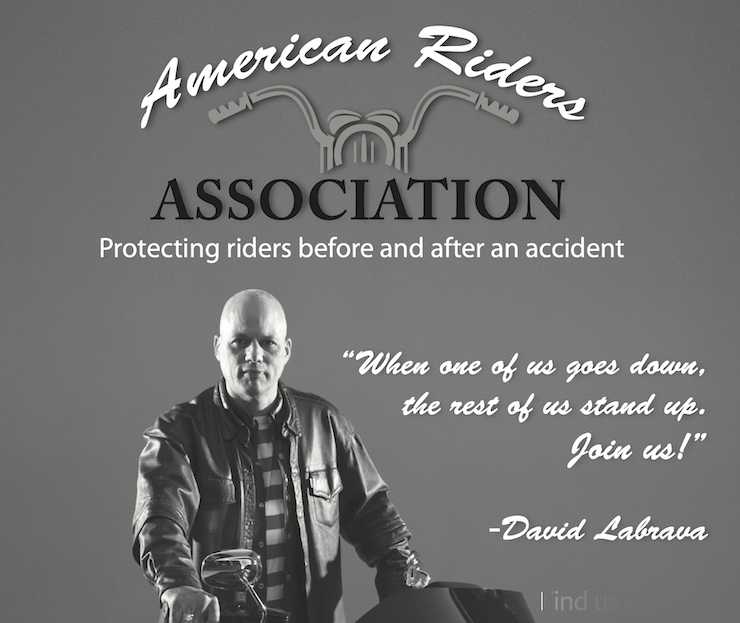Most folks behind the wheel like to blast tunes, catch up on podcasts, or gab on the phone while cruising. Odds are, you’re one of them. Sure, the open road might feel like the perfect place to kick back, but distracted driving is a ticking time bomb that can turn deadly real quick. Some riders crank up the danger by slapping on headphones while twisting the throttle. Yeah, earbuds might let you get lost in the music, but they also shut out the sounds that keep you alive—like a siren screaming or a horn blaring. Too many drivers think as long as their eyes are on the blacktop, they’re golden. Wrong.
In Ohio, riding with headphones is a no-go. Ohio Revised Code Section 4511.84 lays it down clear: “no person shall operate a motor vehicle while wearing earphones over, or earplugs in, both ears.” That means anything that covers both ears—whether it’s noise-canceling cans or AirPods hooked to your phone—is off-limits. This law has been around since 2004, with an update in 2020 to keep it tight. The safest bet for any driver is to ditch the headphones and earbuds altogether, but if you’ve gotta use them, keeping one ear free is the way to go. Ohio’s law has your back on this—it’s illegal to block out both ears, but you can rock one earbud or a single headphone while on the road. This way, you’re still tuned in to those crucial sounds, like sirens or a horn blast. Some states go all-in and ban headphones across the board, but plenty take Ohio’s route, letting you ride with just one ear covered.
Ohio law enforcement stays cracking down on headphone use behind the wheel, yet neighboring states appear to be more laid-back. Indiana, West Virginia, Kentucky, and Michigan? They let you ride with your jams blaring in both ears. Pennsylvania’s got a middle-ground—one earbud’s cool if you’re on a call. The kicker? Many folks don’t grasp the peril of tuning out the road with headphones, or that their state even has rules against it. Studies show that jamming out slows your reaction time by over four seconds – and that’s a lifetime when rubber meets the road.
While car and truck drivers are banned from using headphones, motorcyclists get to roll with a bit more freedom.In 2020, the Governor signed off on a law that lets bikers wear earplugs to protect their hearing from the roaring wind. Lawmakers backed this move, pointing out that riders are at risk of hearing damage from the constant high wind noise. Even Ohio’s motorcycle operator manual gives a nod to hearing protection. In the “PREPARING TO RIDE” section under “WEAR THE RIGHT GEAR,” it says, “Hearing protection reduces noise while allowing you to hear important sounds such as car horns or sirens.” So, earplugs aren’t just about cutting the roar—they help you stay tuned into critical road sounds.
Though like any other law, Ohio’s headphone law isn’t without its exceptions. Here’s the rundown:
- Hearing aid users are in the clear.
- On-duty law enforcement, fire department, and emergency medical service personnel can wear headphones.
- Highway maintenance and repair workers get a pass.
- Garbage truck operators are also exempt.
These folks can cover both ears and won’t face the same penalties if pulled over. But remember, these exceptions only count when you’re on the clock. So, an off-duty firefighter can’t legally rock two earbuds while driving. It’s also worth noting that earphones don’t include speakers built into protective gear like motorcycle helmets.
If you don’t fall into one of those categories, getting caught with headphones on both ears while driving in Ohio can land you a minor misdemeanor. No jail time, but you’re looking at a fine of up to $150. If you’ve been hit with a motor vehicle or traffic offense in the past year, it jumps to a fourth-degree misdemeanor. And if you’ve racked up two or more of these offenses within a year, it climbs to a third-degree misdemeanor.
Drivers who think they can ignore the law and juggle tasks on the road are playing with fire. Distracted driving is a serious issue in Ohio, leading to wrecks that could’ve been avoided. Stay sharp, stay safe, and keep those ears open.
Most folks behind the wheel like to blast tunes, catch up on podcasts, or gab on the phone while cruising. Odds are, you’re one of them. Sure, the open road might feel like the perfect place to kick back, but distracted driving is a ticking time bomb that can turn deadly real quick. Some riders crank up the danger by slapping on headphones while twisting the throttle. Yeah, earbuds might let you get lost in the music, but they also shut out the sounds that keep you alive—like a siren screaming or a horn blaring. Too many drivers think as long as their eyes are on the blacktop, they’re golden. Wrong.
In Ohio, riding with headphones is a no-go. Ohio Revised Code Section 4511.84 lays it down clear: “no person shall operate a motor vehicle while wearing earphones over, or earplugs in, both ears.” That means anything that covers both ears—whether it’s noise-canceling cans or AirPods hooked to your phone—is off-limits. This law has been around since 2004, with an update in 2020 to keep it tight. The safest bet for any driver is to ditch the headphones and earbuds altogether, but if you’ve gotta use them, keeping one ear free is the way to go. Ohio’s law has your back on this—it’s illegal to block out both ears, but you can rock one earbud or a single headphone while on the road. This way, you’re still tuned in to those crucial sounds, like sirens or a horn blast. Some states go all-in and ban headphones across the board, but plenty take Ohio’s route, letting you ride with just one ear covered.
Ohio law enforcement stays cracking down on headphone use behind the wheel, yet neighboring states appear to be more laid-back. Indiana, West Virginia, Kentucky, and Michigan? They let you ride with your jams blaring in both ears. Pennsylvania’s got a middle-ground—one earbud’s cool if you’re on a call. The kicker? Many folks don’t grasp the peril of tuning out the road with headphones, or that their state even has rules against it. Studies show that jamming out slows your reaction time by over four seconds – and that’s a lifetime when rubber meets the road.
While car and truck drivers are banned from using headphones, motorcyclists get to roll with a bit more freedom.In 2020, the Governor signed off on a law that lets bikers wear earplugs to protect their hearing from the roaring wind. Lawmakers backed this move, pointing out that riders are at risk of hearing damage from the constant high wind noise. Even Ohio’s motorcycle operator manual gives a nod to hearing protection. In the “PREPARING TO RIDE” section under “WEAR THE RIGHT GEAR,” it says, “Hearing protection reduces noise while allowing you to hear important sounds such as car horns or sirens.” So, earplugs aren’t just about cutting the roar—they help you stay tuned into critical road sounds.
Though like any other law, Ohio’s headphone law isn’t without its exceptions. Here’s the rundown:
- Hearing aid users are in the clear.
- On-duty law enforcement, fire department, and emergency medical service personnel can wear headphones.
- Highway maintenance and repair workers get a pass.
- Garbage truck operators are also exempt.
These folks can cover both ears and won’t face the same penalties if pulled over. But remember, these exceptions only count when you’re on the clock. So, an off-duty firefighter can’t legally rock two earbuds while driving. It’s also worth noting that earphones don’t include speakers built into protective gear like motorcycle helmets.
If you don’t fall into one of those categories, getting caught with headphones on both ears while driving in Ohio can land you a minor misdemeanor. No jail time, but you’re looking at a fine of up to $150. If you’ve been hit with a motor vehicle or traffic offense in the past year, it jumps to a fourth-degree misdemeanor. And if you’ve racked up two or more of these offenses within a year, it climbs to a third-degree misdemeanor.
Drivers who think they can ignore the law and juggle tasks on the road are playing with fire. Distracted driving is a serious issue in Ohio, leading to wrecks that could’ve been avoided. Stay sharp, stay safe, and keep those ears open.
Most folks behind the wheel like to blast tunes, catch up on podcasts, or gab on the phone while cruising. Odds are, you’re one of them. Sure, the open road might feel like the perfect place to kick back, but distracted driving is a ticking time bomb that can turn deadly real quick. Some riders crank up the danger by slapping on headphones while twisting the throttle. Yeah, earbuds might let you get lost in the music, but they also shut out the sounds that keep you alive—like a siren screaming or a horn blaring. Too many drivers think as long as their eyes are on the blacktop, they’re golden. Wrong.
In Ohio, riding with headphones is a no-go. Ohio Revised Code Section 4511.84 lays it down clear: “no person shall operate a motor vehicle while wearing earphones over, or earplugs in, both ears.” That means anything that covers both ears—whether it’s noise-canceling cans or AirPods hooked to your phone—is off-limits. This law has been around since 2004, with an update in 2020 to keep it tight. The safest bet for any driver is to ditch the headphones and earbuds altogether, but if you’ve gotta use them, keeping one ear free is the way to go. Ohio’s law has your back on this—it’s illegal to block out both ears, but you can rock one earbud or a single headphone while on the road. This way, you’re still tuned in to those crucial sounds, like sirens or a horn blast. Some states go all-in and ban headphones across the board, but plenty take Ohio’s route, letting you ride with just one ear covered.
Ohio law enforcement stays cracking down on headphone use behind the wheel, yet neighboring states appear to be more laid-back. Indiana, West Virginia, Kentucky, and Michigan? They let you ride with your jams blaring in both ears. Pennsylvania’s got a middle-ground—one earbud’s cool if you’re on a call. The kicker? Many folks don’t grasp the peril of tuning out the road with headphones, or that their state even has rules against it. Studies show that jamming out slows your reaction time by over four seconds – and that’s a lifetime when rubber meets the road.
While car and truck drivers are banned from using headphones, motorcyclists get to roll with a bit more freedom.In 2020, the Governor signed off on a law that lets bikers wear earplugs to protect their hearing from the roaring wind. Lawmakers backed this move, pointing out that riders are at risk of hearing damage from the constant high wind noise. Even Ohio’s motorcycle operator manual gives a nod to hearing protection. In the “PREPARING TO RIDE” section under “WEAR THE RIGHT GEAR,” it says, “Hearing protection reduces noise while allowing you to hear important sounds such as car horns or sirens.” So, earplugs aren’t just about cutting the roar—they help you stay tuned into critical road sounds.
Though like any other law, Ohio’s headphone law isn’t without its exceptions. Here’s the rundown:
- Hearing aid users are in the clear.
- On-duty law enforcement, fire department, and emergency medical service personnel can wear headphones.
- Highway maintenance and repair workers get a pass.
- Garbage truck operators are also exempt.
These folks can cover both ears and won’t face the same penalties if pulled over. But remember, these exceptions only count when you’re on the clock. So, an off-duty firefighter can’t legally rock two earbuds while driving. It’s also worth noting that earphones don’t include speakers built into protective gear like motorcycle helmets.
If you don’t fall into one of those categories, getting caught with headphones on both ears while driving in Ohio can land you a minor misdemeanor. No jail time, but you’re looking at a fine of up to $150. If you’ve been hit with a motor vehicle or traffic offense in the past year, it jumps to a fourth-degree misdemeanor. And if you’ve racked up two or more of these offenses within a year, it climbs to a third-degree misdemeanor.
Drivers who think they can ignore the law and juggle tasks on the road are playing with fire. Distracted driving is a serious issue in Ohio, leading to wrecks that could’ve been avoided. Stay sharp, stay safe, and keep those ears open.
– Camille











